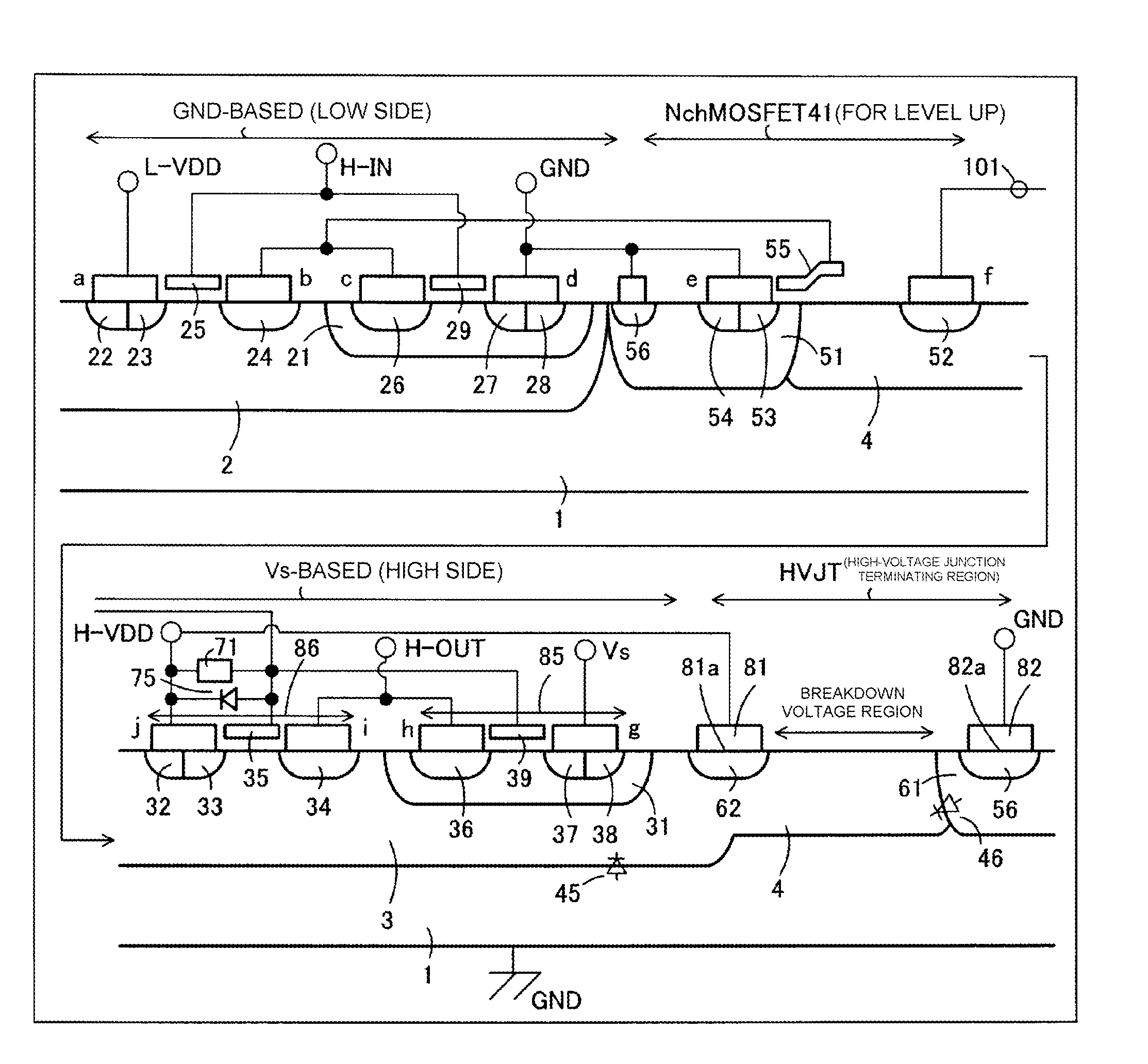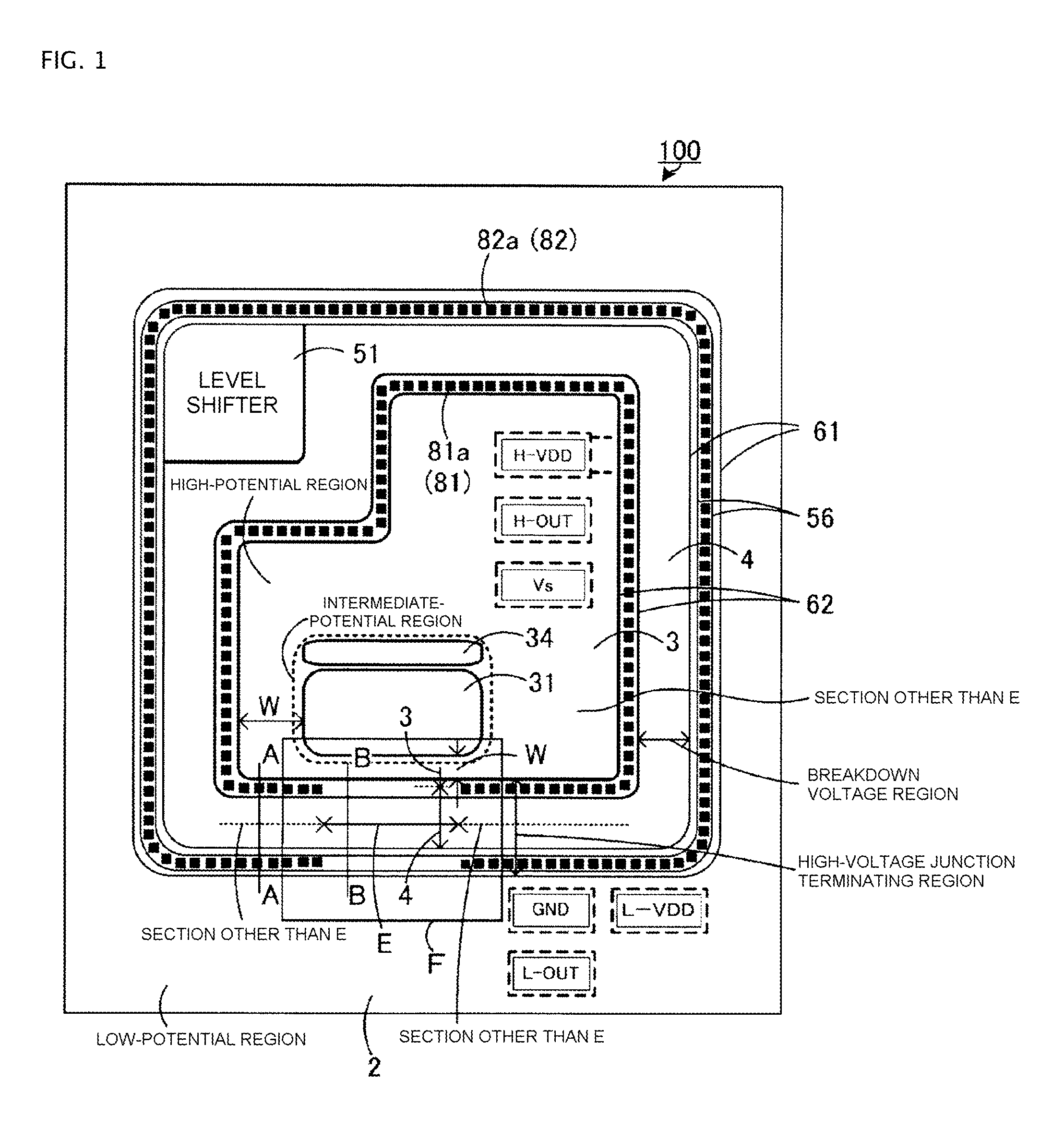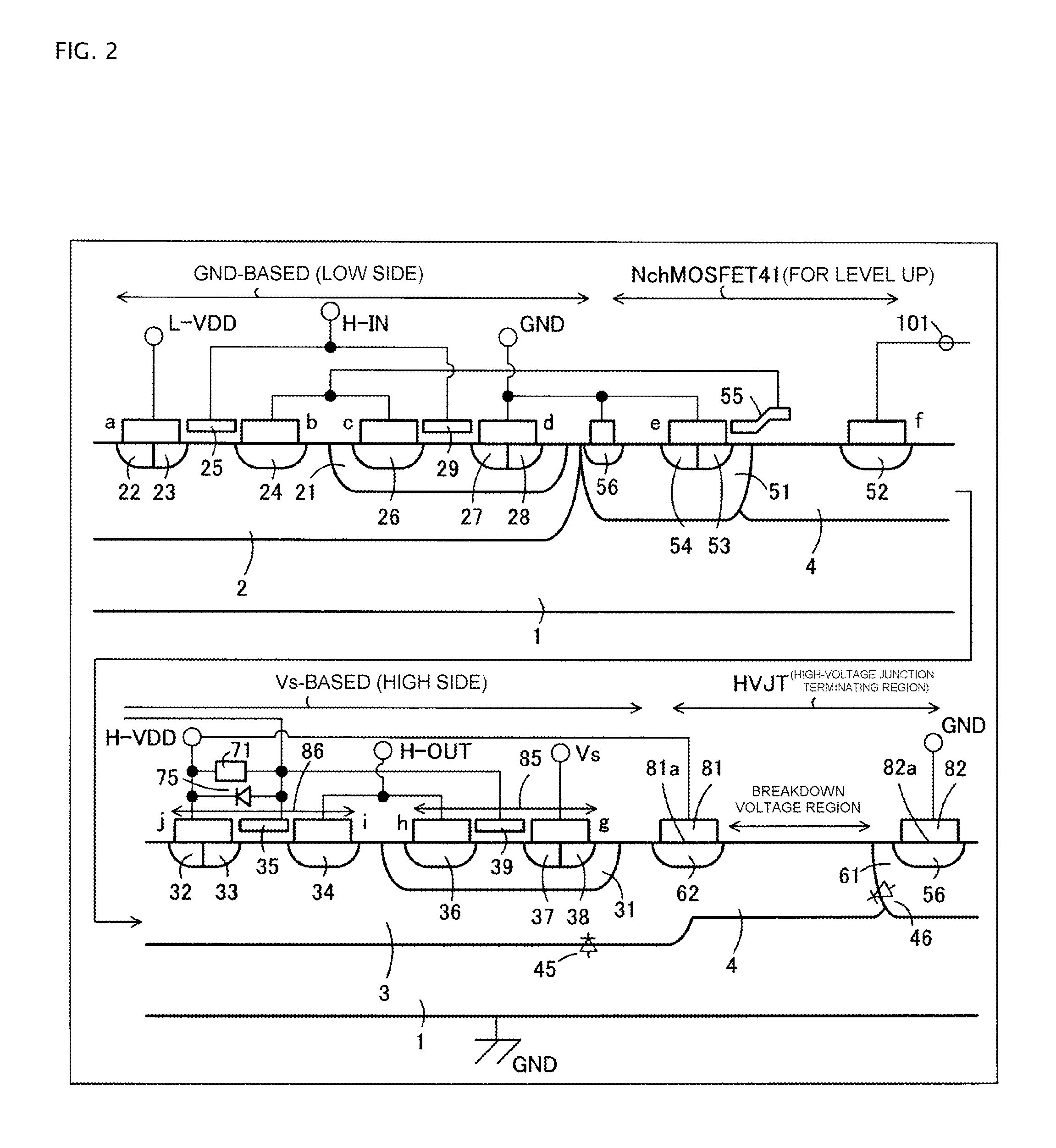High-voltage integrated circuit device
a high-voltage integrated circuit and integrated circuit technology, applied in semiconductor devices, semiconductor/solid-state device details, electrical devices, etc., can solve problems such as increasing the number of invalid regions, and achieve the effect of preventing an erroneous operation or the destruction of logic parts
- Summary
- Abstract
- Description
- Claims
- Application Information
AI Technical Summary
Benefits of technology
Problems solved by technology
Method used
Image
Examples
embodiment 1
[0079]FIG. 1 is a plan view showing substantial parts of a high-voltage integrated circuit device 100 according to Embodiment 1 of the present invention. FIG. 2 is a cross-sectional diagram showing the entire substantial parts, taken along a section line A-A of FIG. 1 in a parallel direction. In FIGS. 1 and 2 the same reference numerals are used for explaining the configurations corresponding to the configurations shown in FIGS. 9 to 13.
[0080]FIG. 3 is a substantial plan view showing flows of an electron hole and an electron by using an enlarged view of an F part shown in FIG. 1. Note that a region shown in diagonal dashed lines represents a section (opposition section) E in which a part of an intermediate-potential region is disposed in proximity to an n-contact region 62. This section E is a section of a high-voltage junction terminating region, whose distance W to the intermediate-potential region is shorter than those of other sections.
[0081]FIG. 4 is a substantial cross-section...
second embodiment 2
[0113]FIG. 5 is a plan view showing substantial parts of a high-voltage integrated circuit device 200 according to Embodiment 2 of the present invention. FIG. 6 is a cross-sectional diagram showing the substantial parts of the high-voltage integrated circuit device 200 according to Embodiment 2 of the present invention. FIG. 6(a) is a substantial cross-sectional diagram showing a cross-sectional structure taken along a section line A-A shown in FIG. 5. FIG. 6(b) is a substantial cross-sectional diagram showing a cross-sectional structure taken along a section line B-B shown in FIG. 5.
[0114]The difference between the high-voltage integrated circuit device 200 shown in FIG. 5 and the high-voltage integrated circuit device 100 shown in FIG. 1 is that the high-voltage integrated circuit device 200 has a double RESURF structure 87 formed in the opposition section E of the high-voltage junction terminating region, whose distance W to the intermediate-potential region is short, without rem...
embodiment 3
[0122]FIG. 7 is a plan view showing substantial parts of a high-voltage integrated circuit device 300 according to Embodiment 3 of the present invention. FIG. 8 is a cross-sectional diagram showing the substantial parts of the high-voltage integrated circuit device 300 according to Embodiment 3 of the present invention. FIG. 8(a) is a substantial cross-sectional diagram showing a cross-sectional structure taken along a section line A-A shown in FIG. 7. FIG. 8(b) is a substantial cross-sectional diagram showing a cross-sectional structure taken along a section line C-C shown in FIG. 7.
[0123]The high-voltage integrated circuit device 300 shown in FIG. 7 is different from the high-voltage integrated circuit device 200 shown in FIG. 5 in that, in the opposition section E whose distance W to the Vs potential region is short, the n-well region 4, which the high-voltage junction terminating region, is made wide compared to the other sections, instead of forming the p-top layer 63 thereon. ...
PUM
 Login to View More
Login to View More Abstract
Description
Claims
Application Information
 Login to View More
Login to View More - R&D
- Intellectual Property
- Life Sciences
- Materials
- Tech Scout
- Unparalleled Data Quality
- Higher Quality Content
- 60% Fewer Hallucinations
Browse by: Latest US Patents, China's latest patents, Technical Efficacy Thesaurus, Application Domain, Technology Topic, Popular Technical Reports.
© 2025 PatSnap. All rights reserved.Legal|Privacy policy|Modern Slavery Act Transparency Statement|Sitemap|About US| Contact US: help@patsnap.com



